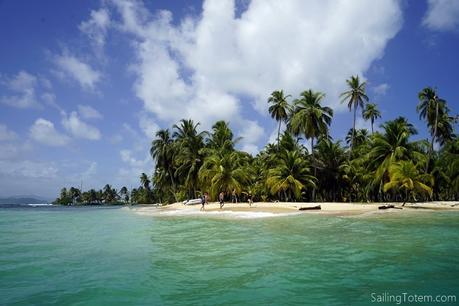
A few days ago we learned that a cruising family was attacked on their boat in Guna Yala (aka San Blas), Panama, with the tragic outcome of death aboard. We met the New Zealanders in the Bahamas in 2017: their uncommon boat (a sky-blue trawler) and friendly crew made for memorable anchorage neighbors during a brief overlap at Stocking Island. What happened? The bigger question: what is the risk to personal safety when cruising?
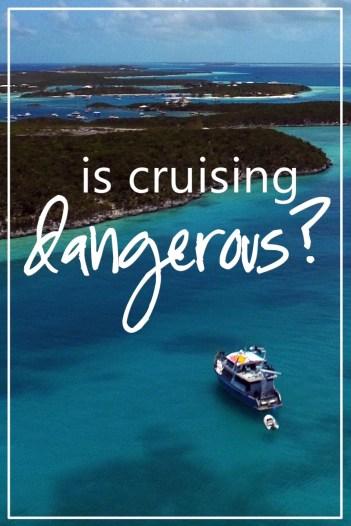
Jamie and I have given more than 40 seminars so far this year, in four countries, to cruisers spanning from the hopeful to the salty. Several of these sessions dive into common fears about cruising, provide context and reality for those fears, and address how to overcome them. After one event I was taken aside and asked by a nervous parent for help understanding how we keep our family safe as cruisers. Probing to better understand (security fears come in different shades and sources): genuine distress stemmed from being boarded with violent intent, and their children attacked in their beds. Asked what they do to keep their kids from being attacked in their beds at home, I got a puzzled look back. Why is this fear attached to cruising, and not at home? I mentioned that the probability of kids being attacked in their bunks by armed marauders was less likely than getting bitten by a shark after being struck by lightning, but felt the doubt. Why is cruising perceived to carry higher personal risk?
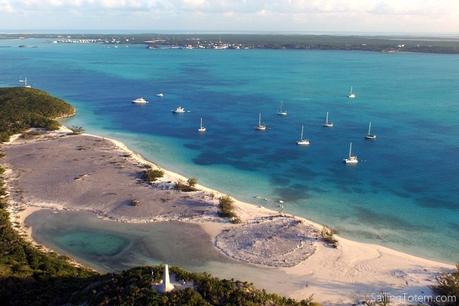
Totem and Aqua Lobo anchored off Stocking Island, Bahamas; May 2017
Is cruising dangerous?
An event like this may prompt some to question their cruising plans. That’s an unfortunate outcome. It’s also not a rational one. Even without clarity on cruiser fatalities (count them on one hand?) consider there are about 10,000 active cruising boats (and nearly 330,000,000 Americans) for a dose of relative perspective. Dying from a car accident is many multiples the risk. My everyday cruising life is much safer than my prior everyday land life: I have no doubt of this.
On land or at sea, we makes decisions about where to go and how to comport ourselves, and most of us—at home or abroad—aren’t wrapping ourselves cotton wool or raising kids in locked-down safe houses. After stepping outside the norm, it’s the norm that scares me more. Yet the very real risks in everyday life on land earn a blind eye when lined up against our life on the water. People are accustomed to allowing the dangers around them to fade into white noise through acceptance of their existence. Cruising not without risk, of course, but feels safer than suburbia to me. A look at hometown rates of property and violent crime might be surprising.
How do you avoid dangerous places?
On land, unsafe areas aren’t hard to avoid. In the cruising life, hotspots for violent crime are also easy to identify, as are those for piracy. On land or at sea, our basic rule is “don’t go there,” and destinations (as well as the routes to reach them) are researched in advance. We occasionally make exceptions to that rule, but it is a choice: to understand the risks, decide they are relevant for us, and mitigate those risks as we see appropriate.
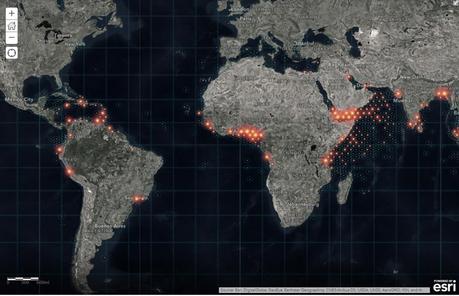
This data visualization is one of many tools for piracy risk evaluation
How do we learn about security concerns for an area? There is no secret handshake for sources to determine risk. Each place is researched independently, and sources may vary by region and security nuance. For example, situation analyses published by security firms providing kidnap & ransom relief services was valuable for researching Indian Ocean piracy and deciding our route. That’s not at all helpful for the Caribbean coast of Panama. There, primary resources we used include:
- The Caribbean Safety & Security Net, an excellent tool for cruiser-specific crime reports (their report on the attack includes external media links, and will be updated as more information is available)
- Noonsite’s country report (scroll for security details)
- Regional Facebook Groups like San Blas Cruisers
- US State Department’s country-specific report (interpretation is needed… for example, there’s currently an advisory for travel to the Bahamas, which is overwhelmingly safe)
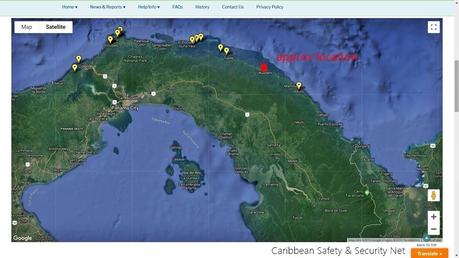
Screenshot of Caribbean Safety & Security Net‘s spot-check tool, with approximate location
Did Aqua Lobo take unnecessary risks?
Just over a year ago, we – like Aqua Lobo and others – chose to cruise along less traveled stretches of the Guna Yala coast. We anchored near the place they were attacked. Our choice, and theirs, did not involve calculated risks or an exception to our safety standards: it is a safe area with no pattern of violent crime against cruising boats. Zero. There’s occasional petty theft, like anywhere. There are isolated incidents, like anywhere.
There are other places with real risk in the Caribbean. They lie hundreds of miles to the north, offshore from the Honduras/Nicaragua border, or hundreds of miles to the east, off the coast of Venezuela, and elsewhere. This was not one of those places with elevated risk. We tend to skip those.
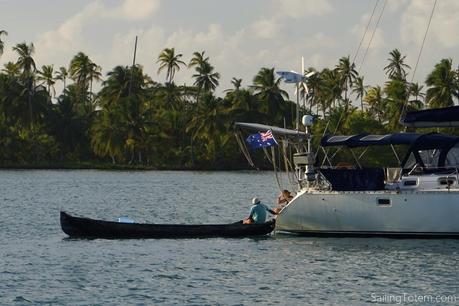
Evening conversation with Guna paddler, while anchored near Isla Mono
Of course, random crime can still occur; as much as I want to believe the best in everyone, the world isn’t that way. That’s what’s chilling about the attack on Aqua Lobo. For cruisers learning about the event, based on the few facts we have: it is catastrophic event that could happen to any of us. This family should have been safer in that anchorage than if they’d driven out for a night at the movie theater in their home town. I truly hope that their friends, and family, and loved ones at home can appreciate this, and not heap upon their tragedy by suggesting that they chose the wrong place to be. They categorically did not!
Why does everyday cruising life – making informed decisions to follow safe routes – have the taint of risk? I think it’s a mix of bad information (or lack of information), coupled by media hyperbole, sprinkled with a pervasive culture of fear. When we planned to depart Australia for Papua New Guinea, a lot of Aussies thought we were nuts. When we shared plans to sail to Mexico from the US, some reactions were similar. Media sells an extreme view that doesn’t represent the whole story.
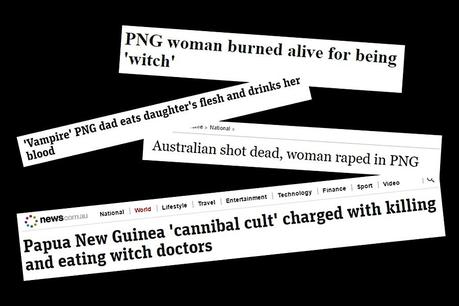
Selection of Australian media headlines
Papua New Guinea did have very real safety factors to consider, but we developed an approach based on that country’s situation which we felt mitigated the risk and put us on a safe path. Mexico has very real safety factors too, but they do not impact us as cruisers. I feel safer here in Mexico than I do in the USA. Researching Panama gave us a few ticklers on places to be prepared; nothing unusual.
Back to the question: how dangerous is cruising? I think the presumptive concern that this is a dangerous lifestyle says more about the culture of fear at home. During visits back to the US the last few years, we were startled at how fears are inflated and preyed upon for the purpose of gain (selling advertising in media, crafting click bait headlines, convincing consumers they need ____ to be safe/healthy/whatever). It is everywhere. Let’s be honest: I did it with this post title. Cruising isn’t dangerous. I know the assumption is based ignorance, so I’ll try not to let it bother me that the presumption suggests I’d deliberately raise a family in dangerous circumstances.
Being smart about safety involves more than getting informed on a destination, but the destination is by far the most important factor and it’s the major piece of information we have about Aqua Lobo right now. There’s chatter in cruising circles about growing discord between the “have” and “have nots” of the world; not sure I buy into that here. Details later may help us better understand the dynamics and if they inform new precautions for the area, and if there’s interest I may pursue other aspects of personal safety aboard in a later post. Meanwhile, for further reading: this article about Guns and Cruising which covers similar big picture concerns along with that very specific topic: arms aboard.
It’s going to be a long road for Derryn and the kids. If you’d like to help make it easier for them to face the myriad of challenges ahead without their husband/father, consider a donation to the fundraiser set up for the family: https://www.gofundme.com/help-for-the-culverwell-family-on-aqua-lobo

